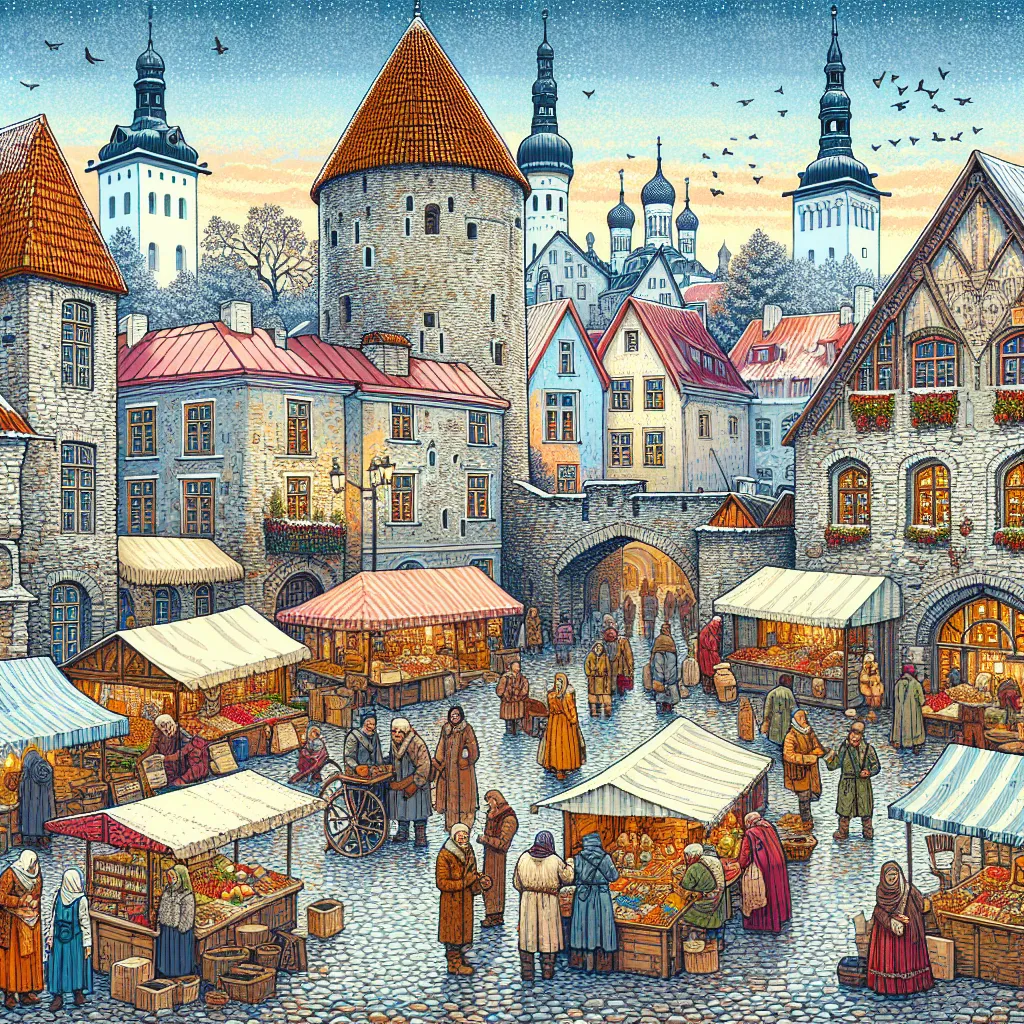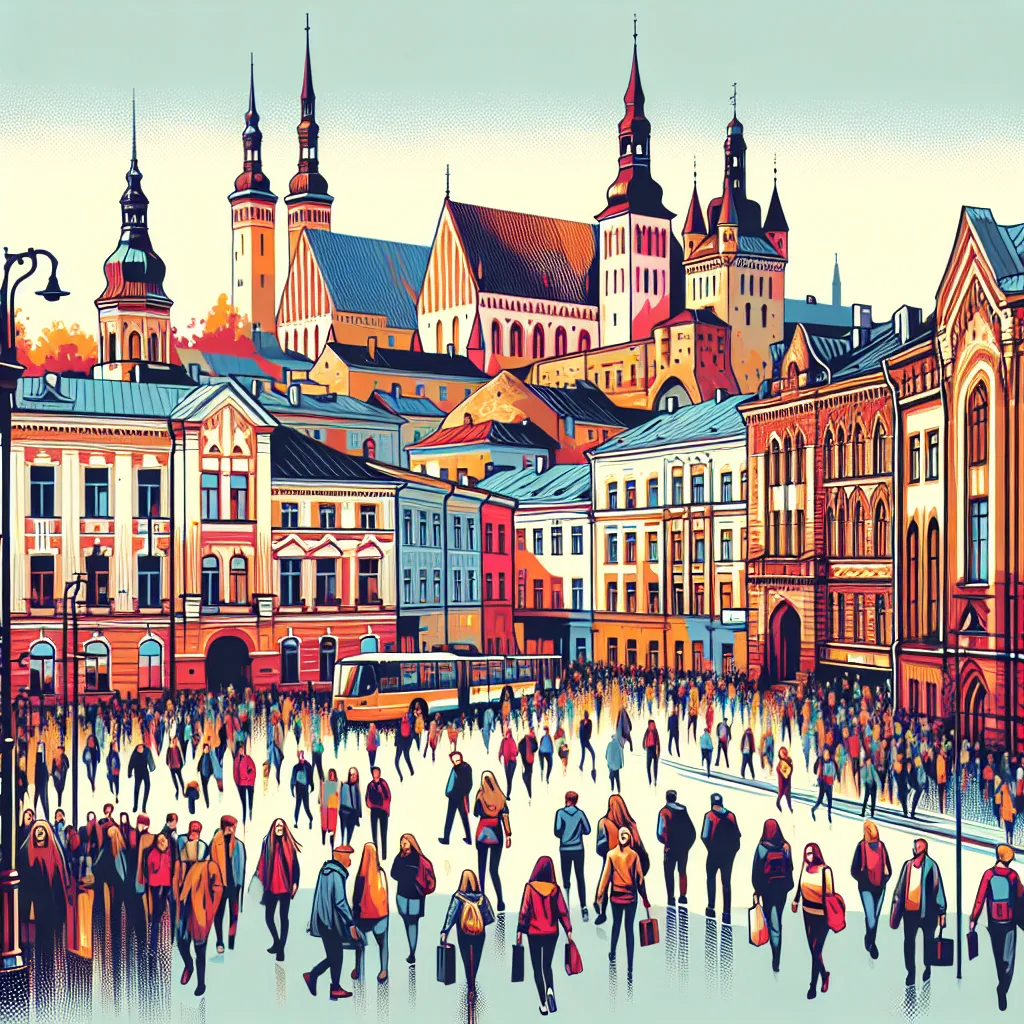What are the features of the housing market in Estonia and the main areas for purchasing?

- Why is Estonia becoming attractive to investors and tourists?
- How has the real estate market in Estonia changed in recent years?
- How has the pandemic changed the real estate market in Estonia?
General information about Estonia
Estonia is a beautiful Baltic republic located in the northeastern part of the European continent, bordered by the waters of the Gulf of Finland and the Gulf of Riga. Its unique natural beauty, abundance of ancient architecture, and pristine ecology attract the attention of both locals and tourists from around the world.
Recently, there has been a noticeable increase in interest in Estonia from foreign investors, particularly in the residential real estate sector, demonstrating significant market potential.
Structure of the country
The country consists of 15 districts, which include 79 local governments. Of these, 15 are urban, while the remaining 64 are rural. The most sought-after locations for purchasing housing have become three major cities:
- Tallinn
- Tartu
- Narva
Tallinn: the capital and cultural center
Tallinn, as the capital of Estonia, is a vivid example of dynamic growth in the real estate sector and one of the fastest-growing markets in Northern Europe. The well-preserved medieval architecture that meets high European standards is one of the city's main attractions.
Tallinn is located just 360 kilometers from St. Petersburg, 390 kilometers from Stockholm, and 80 kilometers from Helsinki, making it one of the most picturesque centers in the region.
Historical landmarks
The old town of Tallinn is an outstanding historical and cultural center, where you can see buildings that date back to the 11th century. Although the capitals of nearby countries, such as Riga and Helsinki, also boast a variety of attractions, none can compete with Tallinn in terms of the number of unique historical sites.
With a population of over 430,000 and an area of about 160 square kilometers, Tallinn is comparable in size to medium-sized cities in Central and Western Europe, which gives it significant advantages.
The economic significance of Tallinn
In addition to everything else, Tallinn is an important seaport, making this city a significant transportation hub for the entire country. It is home to numerous cultural institutions, including:
- Estonian National Opera
- The von Kral Theater
- Russian Theatre of Estonia
The city is also home to three universities and more than ten higher education institutions, highlighting its status in the educational field.
Climate and tourist appeal
The climate of Tallinn is quite similar to the weather conditions in Saint Petersburg, which is why locals and tourists recommend visiting the city during the summer when the strong sea winds of spring and autumn subside. In winter, the city transforms into a fairytale location thanks to the markets and the overall festive atmosphere.
Tartu: a cultural contrast
The second largest city in Estonia is Tartu, located 185 kilometers southeast of Tallinn, along the banks of the Emajõgi River. Tartu offers a cozy atmosphere rich in historical and cultural events, attracting both locals and foreign guests with its unforgettable attractions.
It creates a contrast with Tallinn, maintaining its unique atmosphere and individuality.
Conclusion
Thus, Estonia, with its developing real estate market, rich cultural heritage, and diverse historical landmarks, represents an attractive destination for investment and the creation of new housing for both the local population and international investors. In the future, this country will undoubtedly garner even greater interest among those seeking opportunities for living and investing in real estate, turning Estonia into one of the treasures of the Baltic region.
Transport connections between Tallinn and Tartu
In the capital of Estonia, Tallinn, buses depart for Tartu every half hour, and the travel time is 150 minutes without stops. There are also two trains that run this route every day, taking approximately 4 hours for the journey.
University and youth culture in Tartu
Tartu is famous for its university, which has become a significant cultural and intellectual center not only for Estonia but has also influenced the development of national culture and literature in the 19th and 20th centuries. With a student population exceeding15,000Tartu can rightfully be considered one of the most youthful and actively developing cities in the country.
Narva: a cultural and economic center
Narva is the third most populous city in Estonia, particularly popular among Russian-speaking residents, which often becomes a decisive factor when choosing new housing. The city is located at the intersection of waterways and the sea, which has allowed it to significantly influence the economic and cultural development of the region for centuries.
Historical events of Narva
Ivan the Terrible intended to make Narva a key trading and naval port in the Baltic, but in 1581 the city was captured by the Swedes. Attempts to reclaim Narva led to the start of the Great Northern War under the leadership of Peter I, and a few years later, in1704In that year, the city once again came under Russian control after a series of battles.
Development of industry and railway infrastructure
Over time, Narva actively developed and became an important center for the textile industry.1870In the year, the Baltic Railway was built here, connecting the city with the Baltic Sea, as well as with major cities like St. Petersburg and Moscow.
- The city stretches along the river for 5 kilometers due to its favorable geographical location.
- Artificial lakes were created in the southwestern part where the exhausted quarries used to be.
- The western part of Narva is surrounded by pine forests, creating a wonderful blend of nature and urban architecture.
The real estate market in Estonia
As for the real estate market in Estonia, its history is full of ups and downs. In the early 2000s, the market experienced a period of active growth, but after the global financial crisis...2008In the years following the debt crisis in Europe, there was a sharp decline in transaction volumes and property values.
Nevertheless, starting from2010In recent years, the residential real estate market has started to recover, and prices have begun to rise slowly but steadily.
The impact of the COVID-19 pandemic on the real estate market
The COVID-19 pandemic initially had a negative impact on the real estate market in Estonia, but by the end2021In recent years, the situation has noticeably improved.
9 October 2024
29 January
29 September
9 October 2024
Real estate transaction statistics
If you take a look at2019In general, this year, there were registrations in Estonia.23,200sales transactions, which clearly demonstrate his activity and the interest of buyers in this market segment.

Decrease in real estate transactions
Since the beginning of the pandemic in 2020, there has been a significant decline in the real estate sector, with the total number of transactions reaching only 21,900 per year. However, statistics for the first eleven months of 2021 show that the number of apartment sales has exceeded all previous years.
Reasons for the growing interest in real estate
This phenomenon can be explained by the fact that at the beginning of the crisis period, many families decided to postpone their housing purchase decisions, waiting for a more stable and predictable situation. Soon after, market activity resumed, driven by rising wages in various sectors, which led to increased incomes for citizens and a restoration of confidence in making transactions.
New buyers in the market
In addition, during this period, new buyers began to enter the real estate market, as they started receiving funds from the second pension pillar in the fall. Many of them decided to allocate a portion of their savings for the down payment on mortgage loans, which provided an additional boost for increasing transactions.
Investors and mortgage loans
The number of citizens considering real estate purchases as a way to invest has also increased, including foreigners among them. Approximately25%Residential properties were purchased using mortgage financing, while the other transactions were made with funds not related to loans.
Popular regions for foreign investors
Foreign investors, especially those actively interested in real estate in Tallinn and the Pirita suburb, as well as in the prestigious Viimsi area located on the shores of the Baltic Sea, are influencing the entire market. The city of Tartu has not lost its appeal either, as there is also a growing interest in properties in the market there.
Interest of Russian buyers
Local experts report that in the small towns of northeastern Estonia, Russian-speaking buyers are showing activity due to affordable prices for secondary housing and proximity to the border with Russia. Almost90%Russian-speaking citizens, which simplifies the process of adaptation and further living.
Advantages of buying for summer vacation
Buying real estate in these areas can be particularly appealing for those looking for a place for a country getaway, making such offers accessible to the middle class from major cities in Russia. It can also be an interesting investment project.
Features of the Narva region
As an example, we can mention Narva, which has an important advantage — its convenient geographical location. Just a15-20 kilometersThere are resort beaches in Narva-Jõesuu, where real estate is also offered, but the prices for these properties are significantly higher than in Narva itself.
Interest in Tallinn
In addition, foreign investors, especially Russians, are actively exploring various areas of Estonia. This is particularly true for the capital, Tallinn, where many are purchasing properties both for personal use and for rental purposes.
Price categories of real estate properties
In the city center and the suburb of Pirita, there are the most expensive and desirable properties, including luxury apartments and villas. Their prices can reach astronomical amounts, totaling several million euros.
Prospects of the real estate market
Thus, it can be concluded that the real estate market in Estonia is showing signs of recovery after the sharp impact of the pandemic. Clearly, interest from both local residents and foreign buyers continues to grow, creating an optimistic outlook for the further development of the sector.
Conclusion
In conclusion, it is important to note that the housing market in Estonia continues to attract the attention of both local and foreign investors due to its stability and high growth rates. Each of the three major cities—Tallinn, Tartu, and Narva—offers unique opportunities for real estate acquisition, reflecting the distinctiveness and diversity of the culture of this beautiful country.
Tallinn
Tallinn, as the capital, is a magnet for those seeking a blend of historical atmosphere and modern conveniences. Its ancient streets, cultural events, and vibrant economic life make it particularly appealing to buyers.
Tartu
Tartu, with its youthful energy and university life, attracts people who are looking not only for housing but also for the opportunity to become part of a developing intellectual and cultural environment.
Narva
Narva, in turn, offers comfortable living for Russian-speaking citizens and an incredible natural landscape. With each passing year, this city is becoming increasingly attractive to those looking to invest in real estate in Estonia due to its cultural identity and advantageous geographical location.
Market development trends
It is undeniable that the Estonian real estate market is recovering and showing positive trends. Given the increase in the number of transactions and the growing interest in this country, further development and an increase in housing prices can be expected.
Prospects for buyers and investors
Thus, for potential buyers and investors, Estonia presents an enticing opportunity that promises both sustainable returns and quality housing in picturesque and historically rich cities. When making a decision to purchase real estate, it is important to consider all these aspects in order to make an informed choice and invest in a truly valuable and promising asset.
Comment
Popular Posts
9 October 2024
9931
29 September
322
9 October 2024
1484
Popular Offers

Subscribe to the newsletter from Hatamatata.com!
Subscribe to the newsletter from Hatamatata.com!
I agree to the processing of personal data and confidentiality rules of Hatamatata







